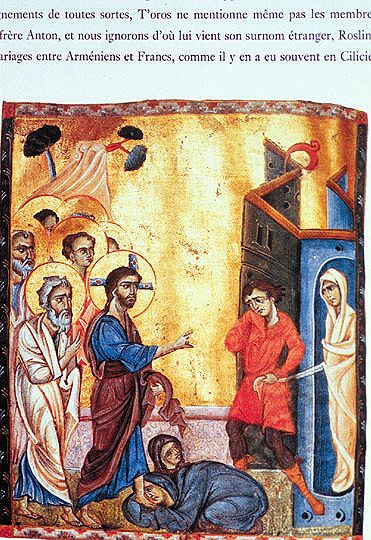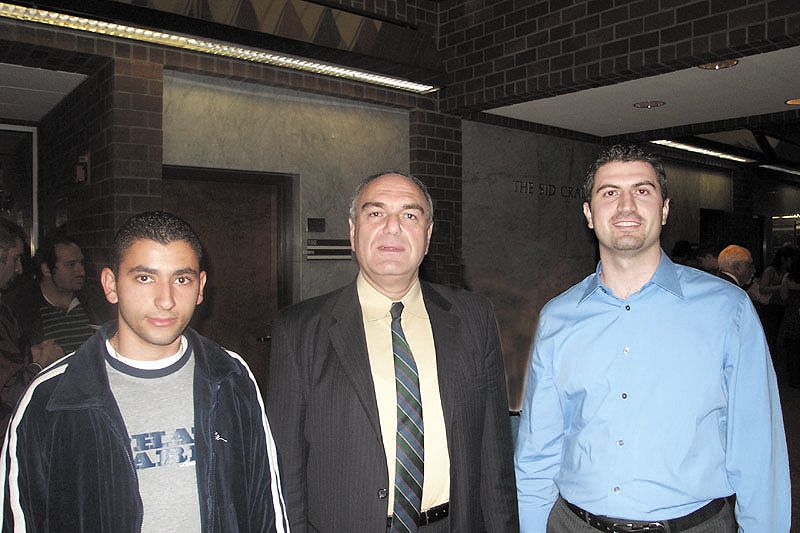Zhanna Bagdasarov
Editor
 A large crowd devoted to all things Armenian gathered at the Alice Peters Auditorium at 7:30PM on November 15 to listen to Dr. Levon Chookaszian’s final lecture entitled, “Armenian Art Treasures Saved from the Genocide.”
A large crowd devoted to all things Armenian gathered at the Alice Peters Auditorium at 7:30PM on November 15 to listen to Dr. Levon Chookaszian’s final lecture entitled, “Armenian Art Treasures Saved from the Genocide.”
Dr. Chookaszian, the 6th Henry S. Khanzadian Kazan Visiting Professor in Armenian Studies for Fall 2006, is spending the current semester instilling a love for Armenian art in his students, as well as the audience attending his lectures. His passion for the topic has been evident throughout his lecture series and stay in Fresno, but it was especially apparent as he progressed through his last talk.
The beautifully illustrated slideshow accompanying the lecture began with timeless images of Aghtamar, the famous palatine church erected in 915-921 AD by King Gagik Artsruni, on the island of Aghtamar, in Lake Van. These illustrations showed the magnificent mural paintings, based on the New Testament, within the interior of the church, as well as the carved biblical scenes on the exterior, with themes from the Old Testament. The superb workmanship withstood the test of time and one of the most beloved examples of Armenian art treasures was preserved. According to Dr. Chookaszian, this church has recently undergone restoration work carried out by the Turkish government.
Throughout the lecture, Dr. Chookaszian provided explanations for why some Armenian artworks remained and others disappeared with time. Artworks of the 11th century survived better than those created in the 12th century, which is attributed to their obliteration by the Seljuk Turks, whereas the Bagratunis are credited with saving various artworks of the 11th century. Furthermore, though many of these treasured pieces were hidden during the time of the Genocide, the Turks succeeded in finding the places through torture. When discovered, the hiding places were looted.

Photo: Barlow Der Mugrdechian
The lecture continued with a presentation of other examples of surviving Armenian art. The glorious Zeitun and Malatia Gospels of the 13th century provided an amazing example of painter Toros Roslin at his best. The Zeitun Gospel, is also known as “The Gospel of War,” because the Armenians of Zeitun would take an oath upon the Gospel to fight until their last breath, before going into battle. Parts of this Gospel are currently housed at the Getty Museum in Los Angeles. Other gospels, such as the Queen Keran and King Vasak Gospels, were also depicted. These survived and are now housed in the St. James Monastery in Jerusalem.
As the lecture progressed, the message of the evening was heard loud and clear. With every mention of a surviving piece it was painstakingly obvious that many Armenian artworks were destroyed during the very dark period of Armenian history. Those that managed to endure are now scattered around the world. The lecture undoubtedly left many feeling resentful and helpless against the forces that had ravaged Armenia. These feelings though, must have been accompanied by relief and comfort knowing that remnants of glorious days past have endured to educate our posterity.
All three of the lectures presented by Dr. Levon Chookaszian provided the audience with an opportunity to gain knowledge about Armenian art. Each lecture offered a new outlook and information about Armenian artists and their works not commonly known. Attending the lectures made it clear to all that opportunities such as these should be embraced by the Armenian community and looked upon as occasions to broaden one’s horizons.
 Hye Sharzhoom Armenian Action
Hye Sharzhoom Armenian Action